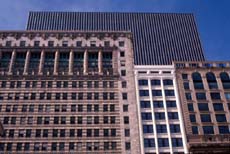index
The end of cities ?
Cities . . . have come to the end of a master narrative, one that stretches back to the earliest urban settlements . . . it is the story of the opposition of town and country that has defined the city since its emergence four thousand years ago. . . . Cities brought change and communication to agricultural regions, but only by concentrating people and resources at a few uniquely favored points. Crowding worked because it enabled cities to create within their teeming streets those multiple possibilities for face-to-face exchange and communication necessary for commerce and culture. . . . [In the last century, however,] Decentralizing forces characteristically took the form of giant grids that enabled one to "plug into" systems of power and communication from any point in the region. These grids supplanted the characteristic hub-and-spoke technology of the 19th century that had privileged the metropolitan hub over the regional spokes. The automobile grid, supplanting the railroads, was perhaps the most powerful technology; but one should acknowledge the influence of the giant grid spreading electrical power over a region, as well as the effects of telephone, radio, and television, and of new systems of production and distribution that bypassed the city. Fishman 1997, 14-15
The flows have found new channels.
